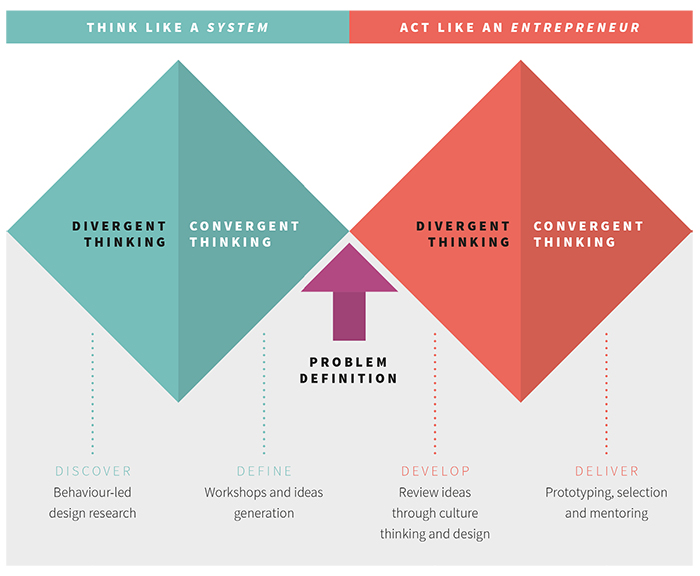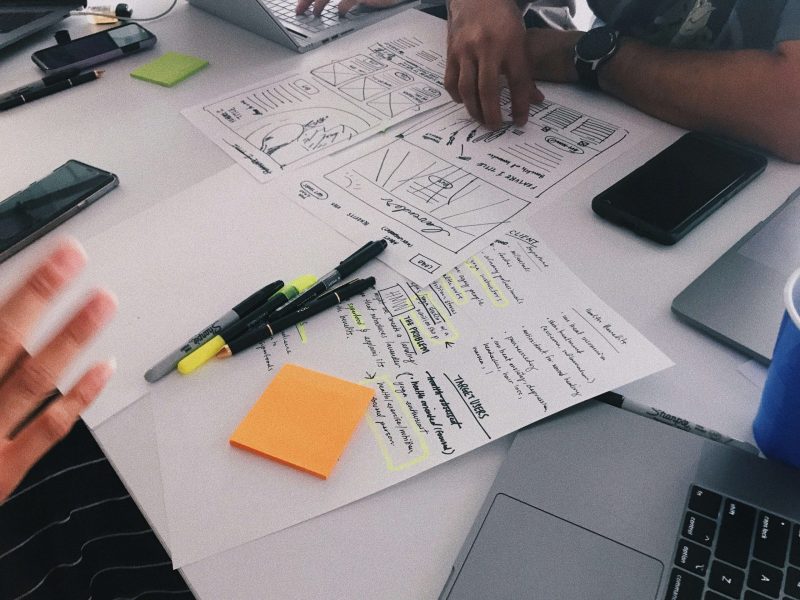Building Adaptive Institutions for a Complex World
Introduction: Navigating Disorienting Times
We live in an era of unprecedented complexity. From climate change to digital disruption, traditional governance models are buckling under pressure. Political leaders cling to linear strategies, while global crises demand adaptive, interconnected solutions.
Enter design thinking—a methodology born in Silicon Valley’s innovation hubs—and its evolution into a catalyst for systemic transformation.
Over the past decade, design thinking has matured beyond creating sleek products to reshaping services, policies, and institutions. But as Rowan Conway’s RSA report From Design Thinking to Systems Change argues, the next frontier lies in merging design thinking with systems thinking to drive lasting societal impact. This blog unpacks this evolution, offering frameworks, case studies, and tools to navigate our complex world.
1: The Evolution of Design Thinking
From Artifacts to Systems
Design Thinking emerged in the 1990s as a human-centered approach to problem-solving, popularized by firms like IDEO. Initially focused on physical products, it expanded into digital services, business models, and public sector innovation. Key milestones include:
- The Double Diamond Model (Design Council): This framework emphasizes divergent thinking (exploring problems) and convergent thinking (delivering solutions). It remains a cornerstone of design practice today (Design Council, 2023).
- IDEO’s Human-Centered Design Toolkit: A free resource that democratized design thinking for non-designers (IDEO, 2015).
Design Thinking’s Growing Pains
Critics argue that design thinking often prioritizes “quick wins” over systemic change. For example, while prototyping a mobile app for farmers is feasible, addressing food insecurity requires reshaping trade policies, supply chains, and cultural norms. As the Rockefeller Foundation (2010) notes, complex challenges demand systems-aware interventions.
2: Tackling Social Challenges with Creative Tools
Case Studies in Systemic Impact
- Healthcare: The Helen Hamlyn Centre’s dementia care initiatives reimagine services around patient dignity, blending empathy with policy advocacy (RSA, 2017).
- Climate Change: Amsterdam’s circular economy initiatives integrate design thinking with urban planning, reducing waste through community-driven systems (Circle Economy, 2022).
The Limits of Challenge Prizes
Competitions like the European Social Innovation Competition crowdsource ideas but often fail to scale due to fragmented markets. As the RSA report highlights, systemic problems require coalitions, not just clever solutions.
3: Why Linear Innovation Fails
When Good Ideas Hit Systemic Walls
- A nurse-led hospital innovation improved patient outcomes but collapsed due to budget silos and workforce shortages.
- SBRI-funded projects often lack follow-on customers despite public value, proving that “problems aren’t markets” (Conway, 2023).
Key Insight: Social challenges don’t create commercial demand organically. Sustaining impact requires rewiring incentives, policies, and stakeholder relationships.
4: Think Like a System, Act Like an Entrepreneur
The RSA’s Integrated Framework
The RSA’s model merges systems thinking’s holistic analysis with design thinking’s agility:
- Discover: Map stakeholders, feedback loops, and leverage points using tools like Kumu (e.g., Donella Meadows’ Leverage Points: Places to Intervene in a System).
- Define: Prototype interventions while anticipating unintended consequences.
- Develop: Test solutions through iterative cycles (divergent → convergent thinking).
- Deliver: Scale adaptively by building coalitions and adjusting strategies.
Case Study: The NHS’s Dual Approach
A 2022 NHS initiative combined telehealth platforms with policy advocacy, securing long-term funding and reducing hospital readmissions (NHS Innovation, 2022).
5: Tools for Systemic Innovation
- Stakeholder Mapping: Visualize power dynamics with Miro or Kumu.
- Feedback Loop Analysis: Use systems dynamics software like Stella.
- Adaptive Governance: Learn from Estonia’s agile digital policies (E-Estonia, 2023).
6: The Future of Systems-Driven Design
Emerging Trends
- AI-Augmented Design: Tools like OpenAI’s GPT-4 accelerate prototyping but require ethical frameworks.
- Participatory Systems Change: Barcelona’s democratic labs co-design solutions with marginalized communities (Barcelona City Council, 2023).
Conclusion: From Adolescence to Maturity
Design thinking’s fusion with systems change marks its coming of age. By embracing complexity, nurturing cross-sector partnerships, and prioritizing adaptive learning, institutions can tackle 21st-century challenges with resilience.


